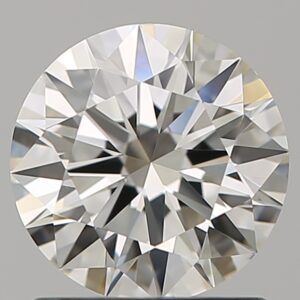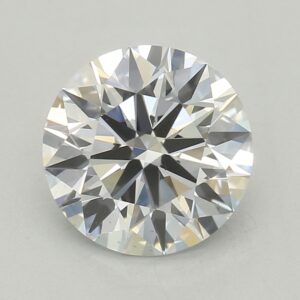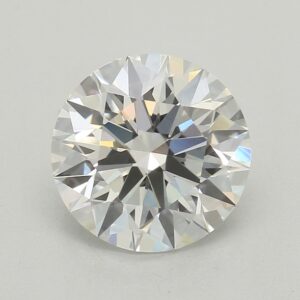Engagement Ring - In Progress
Setting
Stone
We guarantee that every single purchase directly impacts one person's life by giving them access to clean water.
Lab Diamonds (also called Lab Created Diamonds, Man Made Diamonds, Lab Grown Diamonds, and Synthetic Diamonds) are real diamonds that are simply grown in a lab instead of the ground. They are chemically and optically identical to mined diamonds, because they are the exact same mineral: carbon. In fact, the only difference between Lab Diamonds and mined diamonds is where that carbon was crystallized: the lab, or the Earth’s crust.
To make Lab Diamonds, gem scientists create controlled and HOT environments to which they add carbon. Then, through one of two current methods (CVD or HPHT), the carbon is heated, causing it to crystalize and turn diamond clear – just like it does in nature!
Because Lab Diamonds are pure crystal carbon, just like mined diamonds, they look and act exactly the same. They sparkle exactly the same, and both are a 10/10 on the Mohs Hardness Scale. In fact, you can’t tell whether a diamond is lab grown or Earth-grown without gemological testing. So, if you’re looking for an super sustainable option, or just a really great value (think 30-50% of the cost of a mined diamond!), a Lab made gem may be perfect for you.
Lab Created Diamonds look exactly like natural, mined Diamonds. There is no visual or chemical difference at all. That is because they ARE real diamonds (the Federal Trade Commission even recognizes Lab Diamonds as real)! The only thing that separates them is that Lab Grown Diamonds are made by man, and natural diamonds are made by the Earth.
Other diamond “simulants” (like Moissanite and Cubic Zirconia) do not sparkle like Lab and mined diamonds do. Whereas Lab Diamonds are chemically diamond (pure carbon), Moissanite and Cubic Zirconia are different minerals, with different chemical makeups, looks, and hardnesses. In other words, when placed next to a Mined Diamond, a Lab Diamond will look identical, whereas Moissanite and Cubic Zirconia will look different.
Just like mined diamonds, the color of a Lab Grown Diamond is how colorless it is, or how much yellow tint it has. The diamond color scale begins at D and ends at Z, with most Lab Grown Diamonds falling between D and J. Diamonds in color grades D-F are “colorless” (like water), where stones in the G-J range have increasing amounts of slight yellow tint. These gems are called “near colorless.”
Most of our couples want a “white” stone, meaning they don’t want to see yellow tint. While G color grade is a pretty good across-the-board pick for whiteness and value, the color grade you need for a stone to look “white” depends on its shape and size. That is because larger diamonds show more color than smaller diamonds. Also, “brilliant” cut diamonds (Round, Oval, Princess, Cushion, Pear, Radiant, Heart, Marquise) hide color better than “step” cut diamonds (Emerald and Asscher).
The clarity of a Lab Made Diamond is how many internal marks, or “inclusions,” the gem has. Almost all Lab Made Diamonds contain some internal birthmarks. However, most are so tiny you can’t see them without magnification. In addition to typical inclusions that all diamonds can have, Lab Made Diamonds sometimes also include small black metallic inclusions.
Most couples we work with want an “eye clean” Man Made Diamond. In other words, a stone in which no inclusions are visible to the naked eye. The clarity grade you need to have an “eye clean” diamond depends on the gem’s shape and size. This is because some shapes hide inclusions better than others. In “brilliant” cut diamonds (Round, Oval, Princess, Cushion, Pear, Radiant, Heart, Marquise), VS2 clarity offers a good balance of eye clean clarity as well as value. In “step” cut diamonds (Emerald and Asscher), VVS2-VS1 clarity is the best bet for eye clean clarity and value.
There are currently two methods used to lab create Diamonds: HPHT and CVD. There is no visual difference in mined diamonds, HPHT diamonds, or CVD diamonds.
HPHT DIAMONDS
Gem scientists turn gray carbon (graphite, like in pencils) into clear carbon (diamond!) by subjecting the graphite to high pressure and high temperatures (HPHT, get it?) This heat and pressure changes the graphite’s crystal structure into diamond crystal structure, giving us a sparkling gem.
CVD DIAMONDS
Scientists place a tiny diamond chip (called a “seed crystal”) in a chamber filled with carbon-rich gas. They then heat the gas, causing layers of carbon to form on the seed crystal, making a larger diamond crystal grow (Chemical Vapor Deposition).
GEM GEEK NOTE: A Lab Grown Diamond’s chemical structure is a little different than most mined diamonds. HPHT & CVD diamonds are usually “Type IIa” diamonds, meaning they contain no nitrogen. This is super rare to find in a mined gem!

Mined Diamond

HPHT Diamond

CVD Diamond
Because we can control the growth of Lab Created Diamonds, they are not as rare as natural diamonds. Gem quality natural diamonds are actually quite scarce. As a result, the diamonds we make are significantly less expensive than mined diamonds. Take a look!
|
| |
|
|
|
|
|
|
01.
Picture & Video
Always ask the jeweler for a detailed picture or video, like these stones. Check for “white” color and no black dots.
02.
Inspect It
Ask the jeweler to physically view the diamond. Make sure that it is eye clean!
03.
Certification
Make sure you’re getting what you pay for. The best Lab Diamond Certifications are IGI, GIA, and GCAL.